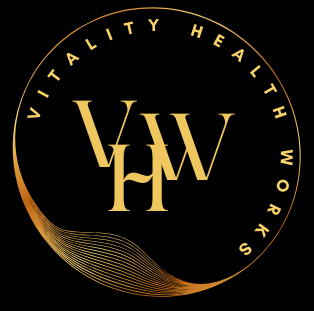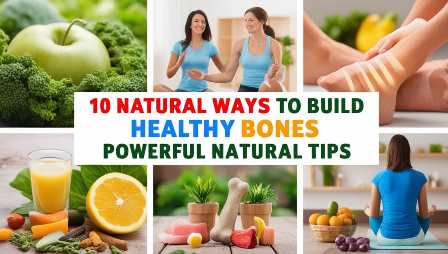Many nutrients play a role in bone health, including calcium and vitamin D. A well-rounded diet can help ensure adequate intake of these nutrients.
Getting calcium rich food for children’s can boost bone density during childhood and maintain bone mass in young adults. This mineral is found in dairy products, leafy greens, beans and some nuts and seeds as well as orange juice and cereals that have been fortified with calcium, bone health and osteoporosis foundation,
Calcium-Rich Foods
Calcium is the mineral most often associated with healthy bones and teeth. But it also plays an important role in bone health, blood clotting, muscle function, and nerve signaling. It’s important to get enough of it, especially as you age, or if you have other conditions that deplete calcium, like hyperparathyroidism.
Thankfully, calcium-rich foods are abundant. Milk and yogurt are rich sources of the mineral (with an 8-ounce serving of low-fat yogurt providing about 34% of the recommended daily intake) and dark leafy vegetables are loaded with calcium (bok choy, Chinese cabbage, turnip greens, spinach, watercress, chard, and kale). Fortified cereals and juices provide calcium as well.
Nuts and seeds
Nuts and seeds are rich in calcium, too. Almonds are a good example – two tablespoons of almond butter provides 111 milligrams of calcium. Molasses is another great source of calcium – 1 tablespoon provides 41 milligrams.
Finally, consider incorporating more dried fruit into your diet — prunes are particularly high in calcium. But watch out for added sugars and saturated fats, as these can hinder absorption.
Vitamin D from sunlight day spa
Vitamin D is important for bone health, as sunlight day spa helps the body absorb calcium from the intestine and regulates calcium levels in the blood. The sun represents the primary and most beneficial natural source of Vitamin D.
However, the skin needs limited sun exposure to produce adequate amounts of Vitamin D. Rickets in children and osteomalacia in adults are conditions often caused by insufficient Vitamin D levels.
People with darker skin can synthesize less Vitamin D from sunlight than those with lighter skin, and the ability to make Vitamin D decreases with age.
People who live in northern climates and those who spend more time indoors also may have a harder time getting enough Vitamin D.
It is recommended that everyone, especially children and adolescents, get at least 400 IU of Vitamin D daily from sunlight day spa. Many foods and beverages are fortified with Vitamin D, including most milk and juices.
The best natural sources of Vitamin D are sunlight day spa and fatty fish. Vitamin D deficiency can lead to a variety of bone conditions, including rickets in children and osteomalacia (bone pain) in adults.
Weight-Bearing Exercises
It’s a good idea to start weight-bearing exercise as early as possible, since bone density is at its highest during childhood and adolescence. If you’re able to, try to incorporate high-impact exercises like jumping or jogging into your routine, and make sure you’re doing it for at least 30 minutes each day.
You can also try low-impact activities like swimming or cycling, but these exercises don’t have the same effect on your bones as those that involve impact. Also, balance training is important to help you avoid falling and fracturing bones in the future.
When you exercise, your muscles pull on your bones to strengthen them. This is what builds bone density and prevents breaks. The best way to build muscle strength is by doing resistance training. This includes exercises like biceps curls, leg lifts and overhead presses.
As you get stronger, you can increase the weight you use and do more repetitions. To do these exercises, try using a free weight or resistance band that you can hold onto with your hands or feet and move slowly, adding one rep at a time.
Magnesium-Rich Foods
Magnesium is a mineral often overlooked, but it’s important bone healthy recipes for healthy bones. One of its key roles is to convert vitamin D into a form that promotes calcium absorption. It also plays an essential role in other bodily functions, such as protein formation and blood sugar regulation.
Try to incorporate magnesium-rich foods into your diet, including legumes like black beans and kidney beans. One cup of boiled beans provides about 50 milligrams of magnesium, or 12% of your daily value.
You can also find magnesium in dark leafy greens such as bok choy, turnip greens and collard greens. One cup of cooked spinach, for example, delivers 78 milligrams of the mineral.
You can also find magnesium in chia seeds and pumpkin seeds. One ounce of pumpkin seeds, for example, provides 168 milligrams, or 37% of your DV.
The seeds are also rich in protein, fiber, phosphorus, zinc and manganese. You can eat them on their own, sprinkle them over salads or mix them into smoothies and oatmeal.
Protein-Rich Diet
Protein, along with calcium and vitamin D, is critical for preventing osteoporosis and other bone health conditions as you age. You can get the nutrients your body needs to support bone health by eating a variety of foods, including protein-rich foods.
Some people have claimed that high protein diets are bad for bone health because they increase the acid load in the body and cause the body to leach calcium from bones in order to neutralize the acidity.
But the truth is that, contrary to this belief, numerous studies have shown that higher protein intakes support as supplement for bone and joint health.
In addition to being a key component of a healthy diet, protein is rich in essential amino acids, which help the body to build and maintain muscle and bone.
Foods that are a good source of protein include lean red meat, chicken, fish, dairy products (especially yogurt and cheese), eggs, beans, soya products such as tofu, tempeh, quinoa, chia seeds and vegetables.
Prunes are also a surprising source of protein and contain a number of bone-healthy compounds, including potassium and calcium.
Avoid Excessive Alcohol and Caffeine
As a person ages, bones can become thinner and weaker, making them more susceptible to breaks. This is particularly true for women, who are more likely than men to develop bone-weakening osteoporosis after menopause.
But the good news is that healthy habits can protect and even restore weakened bones, regardless of age. The best way to prevent fractures is to start building up your “bone bank account” during childhood and adolescence.
This includes getting enough calcium, vitamin D from the sunlight day spa and weight-bearing exercise. It also means avoiding excessive alcohol and caffeine. Drinking more than one alcoholic beverage per day for women and two alcoholic beverages per day for men speeds up bone loss.
Pitkin Eating Plan
The Pitkin Eating Plan, which is taught at the health resort, provides a rich source of virtually all the nutrients that help keep bones strong. For instance, whole grain cereal with a cup of milk provides a high dose of calcium. Vitamin D, needed to absorb calcium into the bone, is found in dairy, fish, eggs and fortified soymilk.
Quit Smoking
Smoking reduces the amount of calcium your body absorbs and increases the risk of osteoporosis in both men and women.
It interferes with bone formation, causing bones to heal more slowly after fractures and weaker, brittle bones that are more likely to break. It also interferes with the cells that form cartilage and bring minerals to bones, reducing bone density.
People who quit smoking have stronger bones and a lower risk of osteoporosis. They can also prevent damage to their lungs, which will improve their quality of life and help them breathe easier.
It’s important to get support from family and friends when quitting, and consider using a program or cessation aid such as nicotine patches, gum or lozenges. Behavioral therapy is another option and helps you identify what triggers your cravings, and learn techniques to overcome them.
When a craving strikes, try to distract yourself by sipping water, playing a game on your phone, taking deep breaths and counting, or making a list of reasons you’re quitting smoking. If the urge persists, find other ways to cope with stress, such as exercise, meditation, a shoulder massage or doing a crossword or jigsaw puzzle.
Vitamin K in bone health
Eat plenty of green vegetables like spinach and kale. These veggies contain calcium, a nutrient that promotes bone health.
They also contain protein, potassium and vitamin K, which helps reduce bone loss. Avoid excess sugar and caffeinated beverages, such as coffee, tea and soda, which can damage bones by stripping them of calcium.
FAQs on Natural Ways to Build Healthy Bones
1. what are some good calcium rich food for childrens?
Great sources of calcium for children include dairy products like milk, cheese, and yogurt. Additionally, leafy green vegetables like kale and spinach, as well as fortified foods like orange juice and tofu, are excellent options to ensure they get enough calcium for strong bones.
2. Is eating chicken bones healthy?
Eating chicken bones isn’t generally considered healthy. While some people chew softer bones like those in chicken wings, it can pose risks like choking, digestive issues, or splintering. It’s best to avoid consuming bones and focus on safer sources of calcium for bone health.
3. What are the calcium rich food for 2 year old?
For a 2-year-old, good calcium-rich foods include dairy products like milk, cheese, and yogurt, which are essential for their growing bones. Additionally, fortified foods like cereals and juices can also provide a boost of calcium to support their development.
4. Are there any kid-friendly bone healthy recipes?
Yes, make calcium-packed meals fun for kids with recipes like cheesy broccoli bites, yogurt fruit popsicles, or calcium-fortified oatmeal with berries.
5. What are some easy bone-healthy recipes?
Try incorporating calcium-rich ingredients like leafy greens, dairy, and fortified foods into meals like spinach salads, yogurt parfaits, or tofu stir-fries.
6. Are there any tasty bone-healthy snacks?
Yes, snack on almonds, cheese sticks, or yogurt with fruit for a calcium and protein boost between meals.
7. Can I find bone-healthy recipes for picky eaters?
Absolutely! Get creative by sneaking calcium-rich ingredients into smoothies, soups, or homemade pizza with whole wheat crust and cheese.
8. What are supplements for bone and joint health?
These are vitamins, minerals, and herbal products designed to support bone density and joint function, often containing calcium, vitamin D, glucosamine, and chondroitin.
9. How do supplements for bone and joint health work?
They provide essential nutrients that support bone density, cartilage health, and joint flexibility, helping to prevent conditions like osteoporosis and arthritis.
10. Can supplements for bone and joint health alone prevent bone and joint problems?
While supplements can support bone and joint health, they’re most effective when combined with a balanced diet, regular exercise, and other healthy lifestyle habits.
Conclusion
During childhood and adolescence, the body “deposits” new bone tissue faster than it breaks down old bone, resulting in stronger, heavier, denser bones. This is when the body reaches its highest peak bone mass, and it’s important to maintain this density throughout life by eating right, exercising and taking precautions against osteoporosis.
Healthy bones protect the body from bumps, falls and injuries that can break or splinter bones. Eating a bone healthy recipes that’s rich in calcium, vitamin D and protein, and exercising regularly help to keep bones strong and reduce the risk of osteoporosis.

